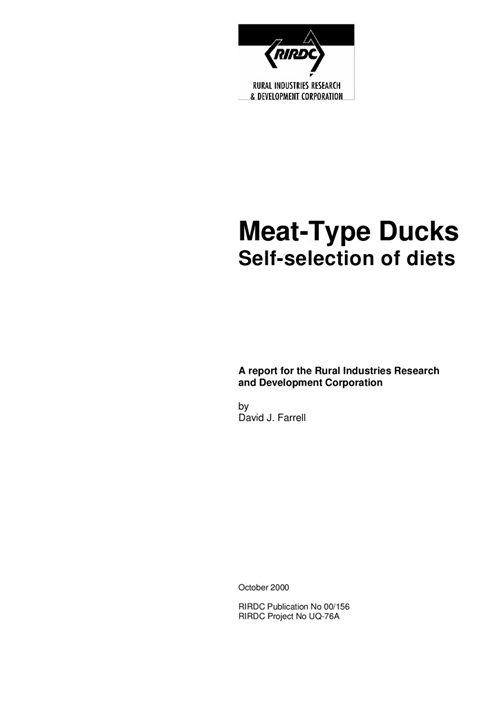Improving the production, efficiency, welfare and processing of commercial ducks
The duck industry uses genetics from overseas, and much of the knowledge used in production has also been developed from research conducted overseas. Much of...

25 pages
Published: 1 Oct 2000
Author(s): Farrell, David J.
Download report PDF
DownloadPurchase a hard copy - AUD $45.00
There is little good information published on nutrient requirements of ducks. There are large differences in performance among genotypes, and while ducks are traditionally fast growing they accumulate substantial quantities of subcutaneous fat.
Research into ducks in Australia has been sparse, since per capita consumption has been less than sparse 200 g/year. With increased numbers of immigrants, particularly from Asia, it is likely that consumption of duck meat and eggs will increase.
The approach taken here was to allow ducks during growth to select between diet choices. This provides information on their nutrient needs and how these change as they move from lean growth to increased fat deposition.
A second advantage of self-selection is that ducks may select diet combinations that are cost effective. It is also probable that they can be given feeds such as whole grains, that do not incur a cost of processing and producers, if they have storage facilities, can take the opportunity of purchasing cheap grain.